Project supported by the LEARN Foundation under the Household farm
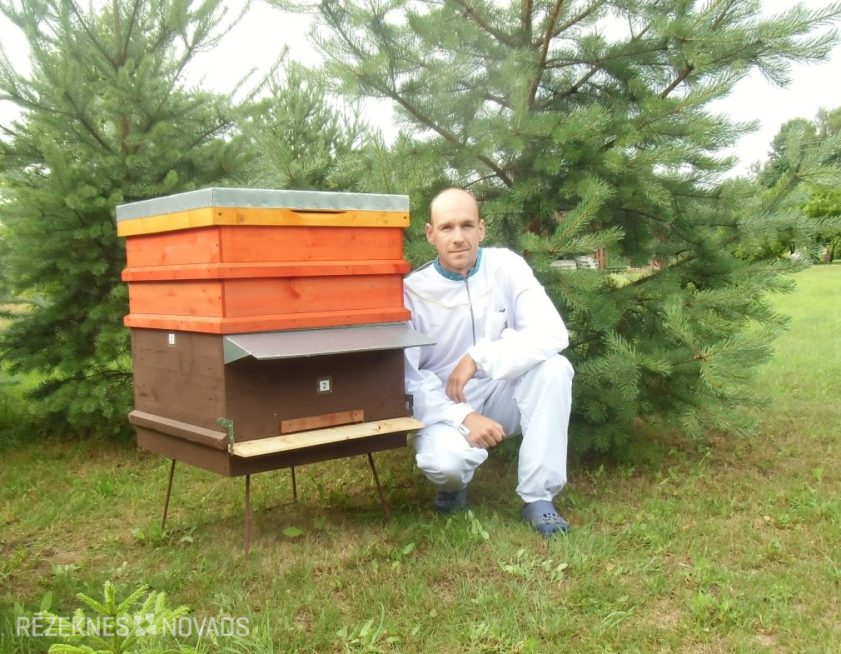
The work with bees was almost random in 2009, when a bee swarm came into his grandfather's club. I took it and put it in the hive of the house. It was a great pleasure that bees were enriched, but even greater joy and satisfaction were the first honey. Three families were killed in that year. Over the year, the number of beehives in the holding increased until 32 bee families were enrolled in autumn 2014.
It was not too difficult to commence beekeeping because the hives had been preserved from the grandparents, the primary necessary inventory – the chimney, the honey butter, the hills, the forks to be recovered.
Seeing how the bee family develops in spring, the expansion of the nest, the survey of the family, the cleaning, the addition of honey rooms, the hunting of honey, the narrowing and feeding of the family in the autumn, the survey of the drava in the winter, and, as in the fairy tale, the ear of the ear to the hive, listening to whether the bees in the San - that whole was so fascinated by me! Books, literature, were searched. And instead, the more deeper in the woods, the more wood! The more i worked with bees, the more questions i could n't find in my books, or they were complicated. I understood that the knowledge of the Latvian beekeeping programme organised by the Latvian beekeeping society, which was successfully completed this year, will be insufficient and two years long. For a man who has just begun or is still thinking of beating bees, i recommend that they visit these courses because the knowledge they have gained is truly valuable and indispensable.
When I visited the course, i realized that the shots available to me, some of which were much more than my own, were not effective. The hives of their own design were different, with different sizes of Peru space and honey rooms, which made it difficult to work. The technical condition of some of the hives was already close to critical. Therefore, it was necessary to change the hives and unify the Drava in order to be comfortable and efficient. In search of a solution to these problems, in the end of last year, i became aware of the “development of the rural economy in Rēzekne District” (LEARN) project competition in support of entrepreneurship. Using this option, i submitted my project application and also succeeded in obtaining support for its implementation. Within the framework of the project, most of the financing was used directly for purchase of new Latvian parks. Now the work is much easier, and it must be recognised, also emotionally more pleasant.
 The practice of good grading over a long period of time has shown that the hive would be good for a maximum period of time, and that the bees would be well, that is, the hive would not be a curved moisture, and it would be best placed on metal pallets. I myself have been in quite a lot of dragons, and the basics on which the hives are placed are quite different: wooden blocks, wooden pallets, bottles of bottles, bricks, aerated concrete blocks, rubber tyres … I have come to the conclusion that my hives will be kept only on a metal pallet specially designed for the troops, because i believe that the pallets must be not only practical but also visually aesthetic. If a village comes to my wife, i must be proud of it! In addition, i believe that by using metal pallets, it is possible to avoid the lower humidity at the bottom of the hive, of course, so that it does not grow into the grass. Therefore, metal pallets were also purchased within the framework of the project, according to the number of hives.
The practice of good grading over a long period of time has shown that the hive would be good for a maximum period of time, and that the bees would be well, that is, the hive would not be a curved moisture, and it would be best placed on metal pallets. I myself have been in quite a lot of dragons, and the basics on which the hives are placed are quite different: wooden blocks, wooden pallets, bottles of bottles, bricks, aerated concrete blocks, rubber tyres … I have come to the conclusion that my hives will be kept only on a metal pallet specially designed for the troops, because i believe that the pallets must be not only practical but also visually aesthetic. If a village comes to my wife, i must be proud of it! In addition, i believe that by using metal pallets, it is possible to avoid the lower humidity at the bottom of the hive, of course, so that it does not grow into the grass. Therefore, metal pallets were also purchased within the framework of the project, according to the number of hives.
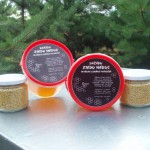 Nagļu parish, where my company is registered, is located in the Luban wetlands where the economic activity is restricted, the virtually intact nature is preserved, the grassland is not covered, the dirt is not blurred and the incontrovertible agricultural crops, such as rapeseed, are not sown. There are biologically diverse meadows, forests, marshes. This year, a new drava house was created in Zvejsola, the immediate vicinity of Luban Lake, and the new hives with new bee families were located. This year, in accordance with the requirements of all normative acts, a production label was also produced, on which: “obtained in Luban wetlands”.
Nagļu parish, where my company is registered, is located in the Luban wetlands where the economic activity is restricted, the virtually intact nature is preserved, the grassland is not covered, the dirt is not blurred and the incontrovertible agricultural crops, such as rapeseed, are not sown. There are biologically diverse meadows, forests, marshes. This year, a new drava house was created in Zvejsola, the immediate vicinity of Luban Lake, and the new hives with new bee families were located. This year, in accordance with the requirements of all normative acts, a production label was also produced, on which: “obtained in Luban wetlands”.
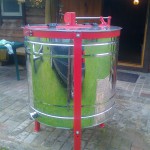 The next case, which was obsolete on the farm and no longer satisfies the quality requirements, was from the grandparents' legacy, another honey butter produced in the 1960 s. The farm can be proud of a new Lyson four-pack mechanical honey butter. It has already been tried and the findings are positive. The work is more smoothly and, above all, better quality. Why was a mechanical, not electric, bought? For the time being, the drava is not planned to be expanded in particular, so that the number of hives is fully equipped with mechanical honey butter, and the electric honey butter would be much more expensive, so that less funding would be devoted to other things.
The next case, which was obsolete on the farm and no longer satisfies the quality requirements, was from the grandparents' legacy, another honey butter produced in the 1960 s. The farm can be proud of a new Lyson four-pack mechanical honey butter. It has already been tried and the findings are positive. The work is more smoothly and, above all, better quality. Why was a mechanical, not electric, bought? For the time being, the drava is not planned to be expanded in particular, so that the number of hives is fully equipped with mechanical honey butter, and the electric honey butter would be much more expensive, so that less funding would be devoted to other things.
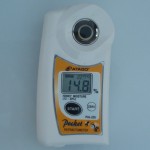 I think of my daddy as a half-professional, because beekeeping, as the next specialist, is going to be serious. I therefore appreciate the buyers of honey. The purchaser must receive quality honey. From the time of his studies in Jelgava, i remember how Antoņina Chukure, a student of the “quality system”, stressed that the quality is when the customer returns to you! I'm trying to work on that philosophy. Honey and any other beekeeping production must be qualitative! One of the honey quality indicators is the moisture content in it. In order to be able to monitor the moisture content of the honey at the pre-processing site, the digital honey moisture refractometer ATAGO PAL-22S was purchased within the scope of the project. The existence of the facility and the need to prove itself. The perception of the ancient times, of course, is true today and will be true as long as honey bee exists (Apis melliferea L.) is the following: honey must be thrown when the cells are completely removed. It can't be disagreed! But there are plants whose honey, if there is too little moisture content, is difficult to throw out, or even impossible. Such is, for example, the grain honey in autumn (pressed), summer and winter rape, oil horseradish, Melissa. With the moisture refractometer of the honey purchased under the project, it is convenient to control the moisture composition of the honey and determine the right moment when it is to be discarded, without waiting for the cells to be completely removed. After discarding the honey, self-control can be performed at the pre-treatment site by measuring water content in it. Such or any other moisture meter must be in each honey-producing holding.
I think of my daddy as a half-professional, because beekeeping, as the next specialist, is going to be serious. I therefore appreciate the buyers of honey. The purchaser must receive quality honey. From the time of his studies in Jelgava, i remember how Antoņina Chukure, a student of the “quality system”, stressed that the quality is when the customer returns to you! I'm trying to work on that philosophy. Honey and any other beekeeping production must be qualitative! One of the honey quality indicators is the moisture content in it. In order to be able to monitor the moisture content of the honey at the pre-processing site, the digital honey moisture refractometer ATAGO PAL-22S was purchased within the scope of the project. The existence of the facility and the need to prove itself. The perception of the ancient times, of course, is true today and will be true as long as honey bee exists (Apis melliferea L.) is the following: honey must be thrown when the cells are completely removed. It can't be disagreed! But there are plants whose honey, if there is too little moisture content, is difficult to throw out, or even impossible. Such is, for example, the grain honey in autumn (pressed), summer and winter rape, oil horseradish, Melissa. With the moisture refractometer of the honey purchased under the project, it is convenient to control the moisture composition of the honey and determine the right moment when it is to be discarded, without waiting for the cells to be completely removed. After discarding the honey, self-control can be performed at the pre-treatment site by measuring water content in it. Such or any other moisture meter must be in each honey-producing holding.
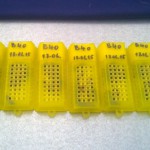 The main factor in the strength of the bee family and the resultant of all other indicators – the wintering force of the family, the susceptibility to disease, the family of the family – is the mother of bees, the tribe material. Intensive and productive dredging practices show that the replacement of bee mothers should be carried out once every two to three years. The intensity of the older mother is significantly reduced. In accordance with the possibility referred to in Section 4.8.3 of the Law on the Procedures for Allocation OF LEARN Financing, the bee mothers were restored/replaced within the framework of the project. Already in 2014, some of the Buckfast racial bee mothers, who are very well attested this year, which suggests that the material purchased under the project will be qualitative and productive.
The main factor in the strength of the bee family and the resultant of all other indicators – the wintering force of the family, the susceptibility to disease, the family of the family – is the mother of bees, the tribe material. Intensive and productive dredging practices show that the replacement of bee mothers should be carried out once every two to three years. The intensity of the older mother is significantly reduced. In accordance with the possibility referred to in Section 4.8.3 of the Law on the Procedures for Allocation OF LEARN Financing, the bee mothers were restored/replaced within the framework of the project. Already in 2014, some of the Buckfast racial bee mothers, who are very well attested this year, which suggests that the material purchased under the project will be qualitative and productive.
For reference: Buckfast is the first man-made bee race to be found in 1917 in England when Brother Adam crossed the dark Italian bees (Apis mellifera Ligustica S., 1806) with English dark bees (Apis mellifera mellifera L., 1758).
The development of the farm will not stop with this project. Already being considered for future projects, various experiments are being carried out, bees are observed, everything is recorded, so that the next projects can clearly and undeniably substantiate and justify such or other fact (bee behaviour, honey, pollen harvest, family development characteristics, the justification of the holdings, the equipment and equipment necessary for more efficient operation, etc.). As an example, it will be mentioned that this year, in the experimental round, pollen are harvested from two shores so that the following projects can justify productivity from the hive, and the result, i confess, is amazing. It is planned to try propolis salts in August. As a professional beekeeper and lecturer Janis trops are recognised, the bees must be taken from the bee family, of course, for bees themselves. Consequently, the aim is not to increase the number of hives in the future but to achieve the highest return on the hive.
Since this year 15 June information on current events in the household, as well as events and achievements in personal life available on the social network https://www.facebook.com/dzipsli.
Consequently, all the objectives set out in the project application have been achieved! Thank you for THE LEARN Funding and special thanks TO THE LEARN Senior consultant Dainai Butlerei for support and advice to prepare the project application! Encouraging others -- to dare and write reasoned and economically justified projects!
Jeanis Yesko,
owner of the farm “Ships”